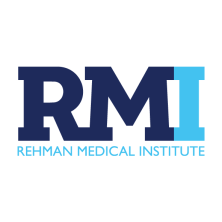A healthy pancreas and biliary tract are necessary for good digestion. Pancreatic and biliary tract problems can lead to severe symptoms, so getting prompt, accurate diagnosis and treatment is critical. The nationally recognized experts at Cedars-Sinai are dedicated to evaluating and treating even the most complex pancreatic and biliary conditions, and other gastrointestinal diseases, through patient-centered care, extensive expert knowledge and application of the most advanced technologies.
The Anatomy
The pancreas is a solid organ located right behind the stomach. It contains two cells that play key roles in how you digest food and control metabolism in your body. One type of cell makes enzymes that break down proteins, fats and carbohydrates so you can get nutrition from what you eat. The other makes hormones, primarily insulin, which controls how your body stores and uses sugar.
The biliary tract includes the organs and ducts that make, store and deliver bile—a thick fluid that helps your body break down and absorb fats and remove waste product into the small intestine for better digestion. The gallbladder collects and stores bile as the liver makes it and then releases the stored bile during a meal to promote digestion.
What Is a Pancreatic and Biliary Condition?
Pancreatic and biliary conditions typically impact your liver, pancreas, gallbladder and/or the bile ducts. These conditions are often associated with long-term damage to the organ itself or surrounding tissue. Sometimes these problems are genetically predetermined. When in trouble, these organs can cause severe symptoms, but they also can silently cause issues.
Symptoms:
Pancreatic and biliary symptoms can include, but are not limited to:
- Abdominal swelling
- Dark-colored urine
- Diarrhea, especially with fat droplets in the stools
- Gas, hiccups and belching
- Itchy skin
- Jaundice—a yellowing of the skin and the whites of the eyes
- Loss of appetite or unexplained weight loss
- Nausea
- Pain throughout the upper abdomen that often travels to the mid-back region
- Pale-colored or bloody stool
- Vomiting
Diagnosis
Diagnostic services at Rehman Medical Institute specialize in detecting the full spectrum of diseases of the pancreas and bile ducts. A diagnosis usually begins with the doctor talking to you about your medical history and doing a physical exam. Your doctor will also ask questions about your personal and family history to determine if you're at higher risk for a specific disorder. Today's advanced diagnostic tools are more accurate and less invasive than ever before, and commonly include:
- Blood tests to examine levels of pancreatic enzymes or liver function
- Computed tomography (CT) to show inflammation and any scarring in soft tissues or swollen bile ducts
- Endoscopic retrograde cholangiopancreatography (ERCP) to examine the hollow channels within the biliary tract and pancreas, where stones or blockage can be seen
- Magnetic resonance imaging (MRI) to show inflammation of the pancreas, abdomen or pelvis
- Ultrasound to look at your gallbladder, if your doctor suspects gallstones or gallbladder inflammation
- Upper endoscopy to look inside the stomach and gastrointestinal tract
As the early adopters in emerging diagnostic techniques, RMI’s expert team provides timely and precise diagnosis, a critical step in receiving personalized treatment for your unique needs.
If you've been diagnosed with a disease of the pancreas or biliary tract, you'll receive exceptional care and a personalized treatment plan from the Pancreatic and Biliary Diseases Program. The care team at RMI performs innovative, minimally invasive and conventional surgery, and delivers nonsurgical treatment options, as needed. Every approach is patient-centered, with the goal to help you get better and stay healthy.
If you have been diagnosed with a pancreatic or biliary condition, rest assured there are many treatment options available to you. Many of these procedures are minimally invasive and require only a small incision. This usually results in much faster recoveries and shorter hospital stays than with conventional operations. Some interventional gastroenterology procedures offered at Cedars-Sinai include:
- Endoscopic Retrograde Cholangiopancreatography (ERCP): ERCP is used to remove or open obstructions in the gallbladder or bile ducts, repair complications from previous surgeries and to reach pancreatic or bile duct tumors for biopsy.
- Endoscopic Ultrasound (EUS): EUS uses an endoscope with an ultrasound component on the tip of it to view underneath the surface of the gastrointestinal tract, as well as into surrounding organs. EUS also is used to perform biopsies on tissue growths to identify what they are.
- Extracorporeal shock wave lithotripsy (ESWL): ESWL can be used to crush stones in the pancreas and bile ducts using sound waves generated by a machine (lithotriptor) placed outside the body. Cedars-Sinai is one of the only medical facilities with a lithotriptor and skilled technicians on-site.
- Interventional Radiology: Many diagnostic or therapeutic procedures involve injection of an X-ray contrast dye directly into the bile duct or placement of external drainage tubes to relieve blockages of the biliary tract.
The Pancreatic and Biliary Diseases and Interventional Gastroenterology programs at Cedars-Sinai also offer a full range of procedures in what is called interventional or therapeutic endoscopy. In addition to the procedures listed above, other interventional endoscopic options offered include double balloon enteroscopy, endoscopic pancreatic therapy, mucosectomy and pancreatic and biliary stenting
Conventional Surgery Options
If your pancreatic or biliary condition can't be treated endoscopically or through other minimally invasive techniques, your doctor may consider a more conventional surgical option as part of your treatment, such as:
- Gallbladder removal: One of the most common surgeries performed, laparoscopic cholecystectomy (gallbladder removal) is done when gallstones, which typically go away on their own, begin to cause pain or bring about other symptoms of discomfort. Recovery times are much shorter than with traditional surgical gallbladder removal.
- Pancreatic cancer surgery: Surgery (resection) is the only way to cure pancreatic cancer, though not all pancreatic cancers can be operated on. Cedars-Sinai is one of only a few medical centers using advanced laparoscopic procedures for pancreas and liver resection.
- Pancreas surgery: Surgically draining the pancreatic ducts can relieve pain in about one-third of patients with chronic pancreatitis. Other surgical procedures combine duct drainage with resection (cutting away of the pancreas head). Some patients may need to have the pancreas removed completely. In some cases, pancreatic transplantation may be an option.










